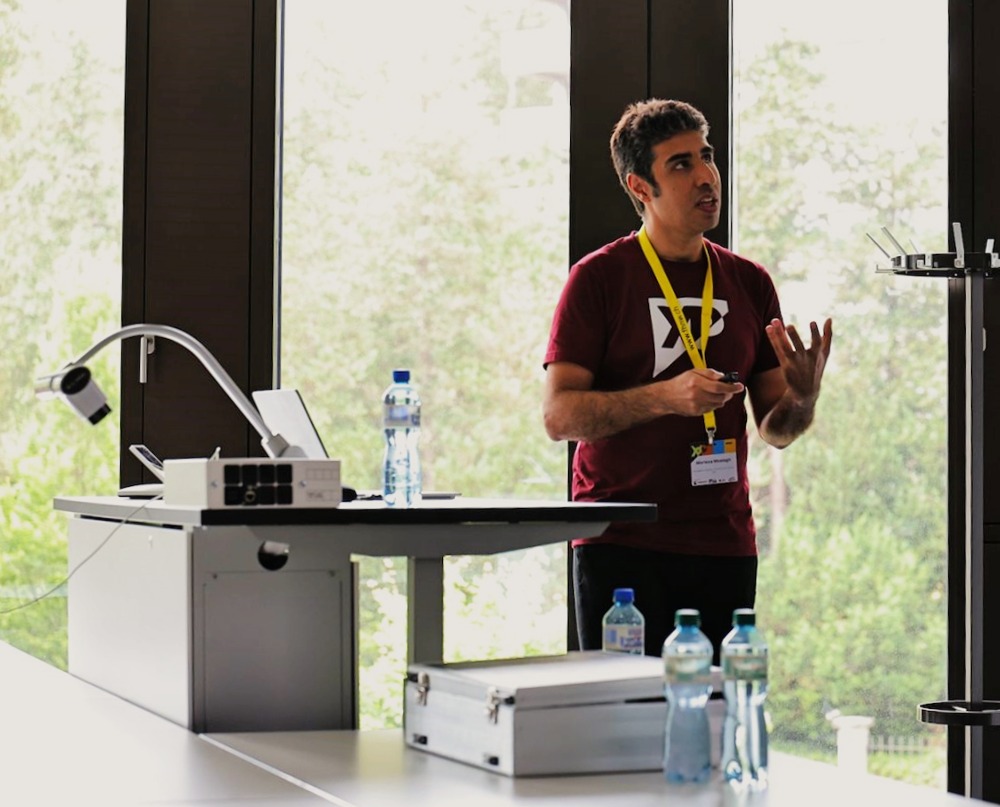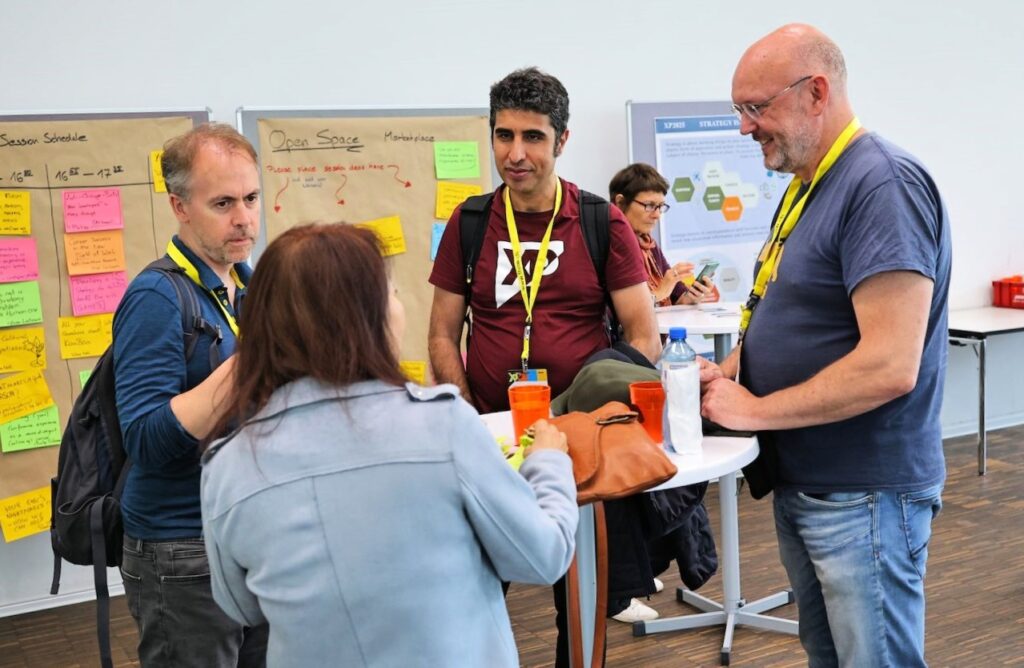26th International Conference on Agile Software Development, XP 2025, was held at FHNW Campus Brugg-Windisch, Switzerland. From our group, Morteza presented a paper on user-side representative in agile development.

Morteza presented the paper titled Investigating User-Side Representatives in Large-Scale Agile Software Development, where he, together with one of our past master students Vegard Svesengen and Babak, has investigated the role that employees at the Norwegian Labour and Welfare Administration (NAV) play in NAV’s agile system development process. The abstract for the paper is provided below.
The XP conference is one of the main conferences for academics and practitioners working with agile system development. Other topics covered at the conference this year include AI and agile, agile coaching, hybrid work and more. Below you will find more information about our paper.
How to cite: Moalagh, Morteza, Vegard Svesengen, and Babak A. Farshchian. 2025. “Investigating User-Side Representatives in Large-Scale Agile Software Development.” In Agile Processes in Software Engineering and Extreme Programming, edited by Sibylle Peter, Martin Kropp, Ademar Aguiar, Craig Anslow, Maria Ilaria Lunesu, and Andrea Pinna, 545:100–115. Lecture Notes in Business Information Processing. Cham: Springer Nature Switzerland. https://doi.org/10.1007/978-3-031-94544-1_7.

Abstract: User involvement is critical in large-scale agile software development. User representatives bridge access gaps and align development teams with user expectations. However, research primarily focuses on development-side user representatives like product owners or user experience designers, overlooking user-side representatives who bring practical expertise and bridge communication between users and development teams. This highlights a gap in understanding user-side representatives’ roles in large-scale agile software development for fostering effective collaboration. In this paper, we ask the following research question: What are the roles, responsibilities, and challenges of user-side representatives in large-scale agile software development? We conducted an exploratory case study within a large public organization using interviews, focus groups, and document analysis to answer this. We investigated two established user-side representative roles: implementation coordinators and change agents. In our distributed case organization, implementation coordinators serve as county-level contact points, overseeing planning, coordination, training, and follow-up of software release implementation. Based in local offices, change agents facilitate requirements elicitation, test software quality, train users, share knowledge, and handle user requests. These roles enhance communication of user needs, support alignment between development and user requirements, and complement development-side user representatives. These findings contribute to a deeper understanding of user involvement in large-scale, distributed agile software development.